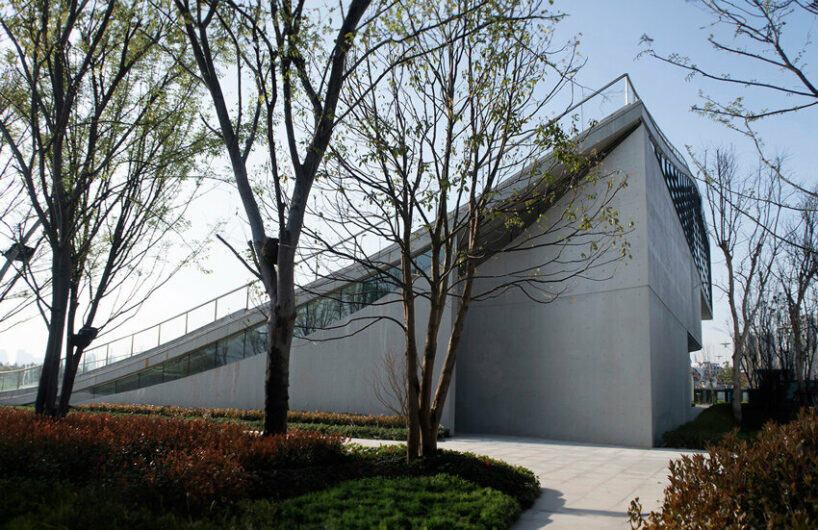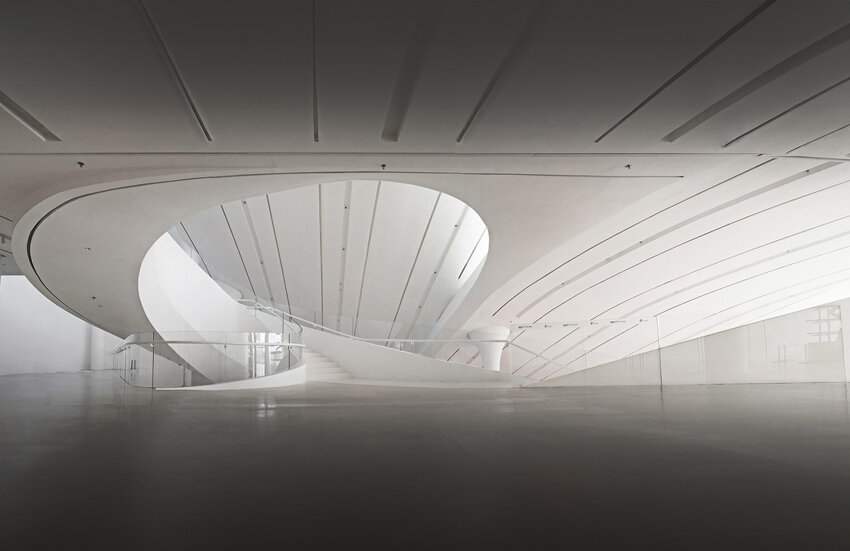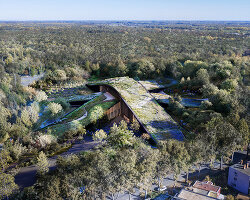Nanchang OCT Contemporary Art Center expands organically
DUO – Decode Urbanism Office’s design for Nanchang OCT Contemporary Art Center in China embodies a holistic architectural system, conceived as an organism shaped by the surrounding context rather than artificial impositions. This ‘self-organized’ structure seeks architectural openness and public engagement, fostering a long-term state of ‘harmonious coexistence’. The museum design philosophy prioritizes reducing the influence of artificial design will, favoring the induction of inherent factors from the surroundings to shape the architectural form. The site, influenced by the distant wetland landscape and the nearby Festive Square, eschews a spectacular figure in favor of a public space. The square site dictates the building’s square outline, with a raised ground on the opposite side forming a ‘hillside’ space conducive to relaxation, viewing, and observation. The development, responding to the surroundings, shapes the internal space dynamically, creating a non-equilibrium system with a cantilevered structure and an underground multifunctional area.

all images courtesy of DUO – Decode Urbanism Office
the architecture transforms into an organic natural sequence
The low-intervention design strategy allows the architectural system to ‘self-organize’ under existing factors, presenting a state of non-equilibrium and openness. The building, designed without interior partitions and open towards the landscape, triggers a positive ambiance, resulting in an architectural space with low entropy. The lifted ground serves as a porous interface, extending the urban realm above and hosting architectural events below. This openness transforms the architecture into an organic natural sequence, creating a public space where art is demystified and accessible to the general public. The porous interface allows individuals to peek into internal art activities, promoting the popularization of art and dismantling its exclusivity. The Nanchang OCT Contemporary Art Center by DUO – Decode Urbanism Office successfully integrates architecture with its surroundings, fostering accessibility and public engagement in the realm of art.

Nanchang OCT Contemporary Art Center is shaped by its surroundings, fostering ‘harmonious coexistence’

the concept prioritizes reducing artificial influence, allowing inherent factors to shape the museum’s design

square site dictates the building’s outline, featuring a raised ‘hillside’ space for optimal viewing

lifted ground serves as a porous interface, extending the urban realm above and hosting events below

influenced by the wetland landscape and Festive Square, the site enhances public space

‘self-organizing’ development shapes internal space dynamically, creating a non-equilibrium system

designed without partitions, the building triggers positive ambiances in a space with low entropy

openness transforms architecture into an organic sequence that hosts a public art space



project info:
name: Nanchang OCT Contemporary Art Center
architect: DUO – Decode Urbanism Office
lead architect: Jian Junkai
location: Nanchang, China
designboom has received this project from our DIY submissions feature, where we welcome our readers to submit their own work for publication. see more project submissions from our readers here.
edited by: christina vergopoulou | designboom















